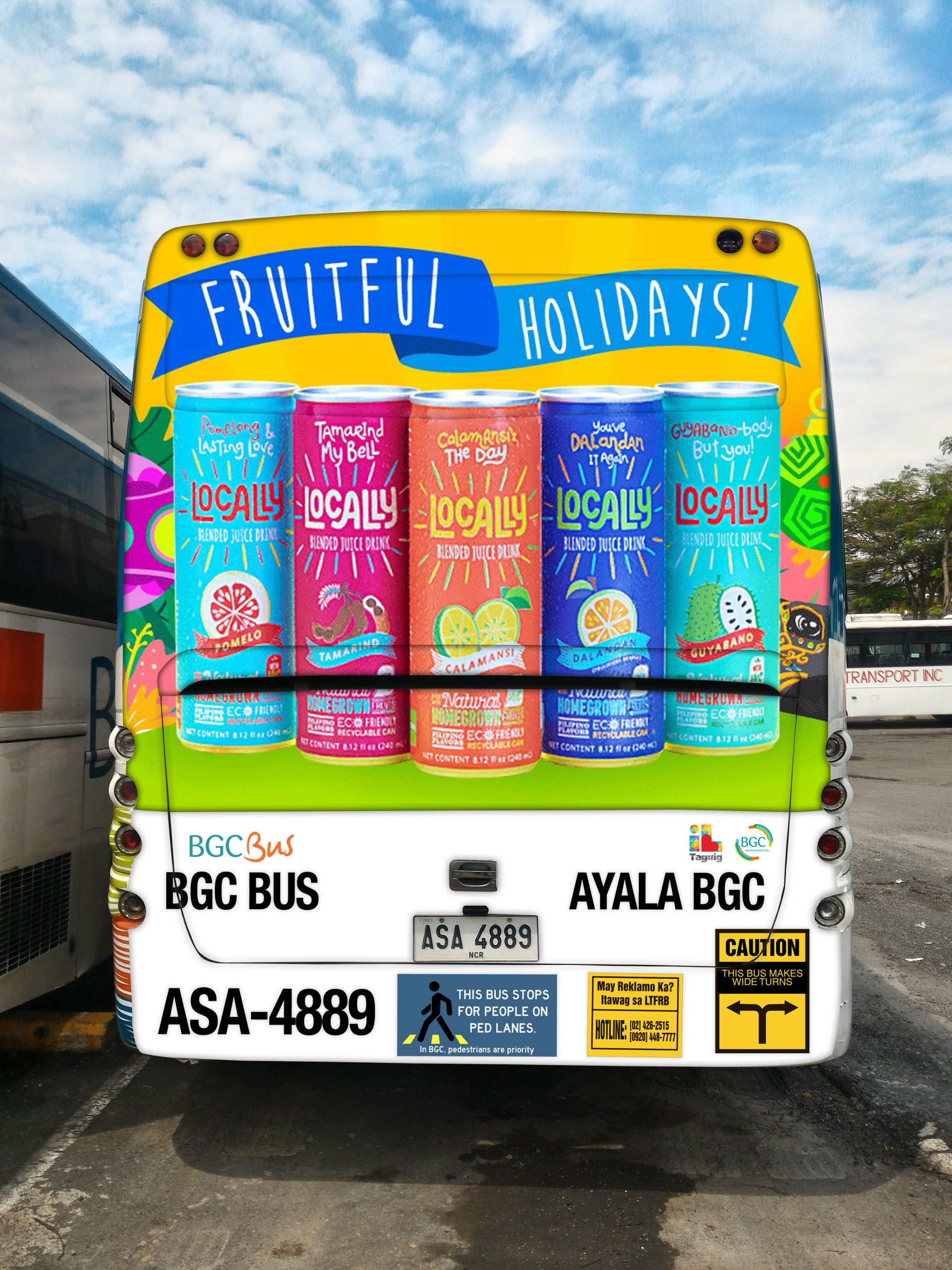Why Pick Transit Advertising Philippines for Your Brand name
Understanding the Function of Transit Advertising in Enhancing Brand Presence and Consumer Interaction
Transit marketing has actually become a pivotal aspect in the marketing landscape, using unique chances for brand names to elevate their visibility and engage customers efficiently. With the ability to reach a diverse and restricted target market throughout their daily commutes, these advertising and marketing strategies are not simply concerning visibility; they are regarding developing meaningful connections with prospective consumers. As we explore the multifaceted advantages and cutting-edge approaches within transit advertising and marketing, it comes to be important to consider exactly how these aspects jointly affect customer perception and habits, questioning about their long-term effect on brand name commitment.
Definition of Transit Advertising
Transit advertising refers to the practice of promoting products, services, or brands with advertisements placed in and around mass transit systems. This kind of advertising and marketing incorporates a range of placements, including posters on buses and trains, electronic displays at transit stations, and covers on the outside of automobiles. It aims to reach a varied audience, maximizing the high foot traffic associated with public transportation.
Transit advertising is strategically placed to catch the attention of travelers, who typically spend substantial time waiting or taking a trip. By incorporating ads into the day-to-day routines of people, brand names can create a long-term perception and foster brand acknowledgment. The medium is specifically efficient in urban environments, where mass transit is a main setting of traveling.
Additionally, transportation marketing can help with localized targeting, permitting companies to get to particular demographics based upon transportation routes and terminal areas. As city populations expand and using public transportation boosts, this advertising technique has actually acquired prestige as an important part of integrated advertising strategies. The dynamic nature of transportation advertising, integrated with its capacity to engage consumers in a restricted environment, highlights its value in contemporary advertising practices.
Benefits of Transportation Advertising And Marketing
The effectiveness of transit advertising and marketing depends on its ability to provide a plethora of benefits to brands seeking to improve presence and engagement. One of the main benefits is the considerable reach it offers; transit advertisements can properly target varied demographics across urban areas, reaching both pedestrians and travelers alike. This wide direct exposure significantly increases brand understanding.
An additional advantage is the high regularity of impacts. As transit vehicles follow recognized paths and quit at several places, they produce repeated exposure that strengthens brand messages. This frequency fosters familiarity, which is essential in consumer decision-making.
Transit advertising and marketing is also cost-effective contrasted to various other media systems. Provided its extensive reach and potential for high impressions, brands often experience a lower price per thousand perceptions (CPM), maximizing their advertising budget.
Moreover, transportation advertisements can produce a sense of area link. By lining up with local transit systems, brand names can resonate with regional audiences and cultivate a sense of local satisfaction. This local method improves brand name loyalty and involvement, making transportation advertising an engaging option for services intending to strengthen their presence on the market.

Efficient Strategies for Transportation Campaigns
To make the most of the impact of transportation campaigns, brand names ought to leverage critical planning and implementation tailored to their target market. Initially, identifying the group qualities of the audience utilizing public transit is vital. This allows brand names to create tailored messaging that resonates with possible customers.
Following, selecting the ideal transportation mediums is crucial. Whether using bus covers, subway posters, or digital displays, each medium has special advantages that can enhance exposure. For circumstances, lively visuals on bus covers can stand out, while electronic ads can be upgraded regularly to reflect timely promos.
Moreover, integrating a natural branding approach across transit systems makes certain consistency and enhances the brand name's identification. Utilizing memorable taglines and captivating layouts will reinforce brand recall among commuters.
Lastly, timing is an essential variable in executing successful transit campaigns. Introducing campaigns throughout height traveling hours or neighborhood occasions can significantly increase visibility and engagement. By utilizing these methods, brands can successfully harness the capacity of transportation marketing, promoting higher understanding and connection with their target audience. Eventually, a well-executed transit campaign can drive substantial growth in why not find out more brand presence and customer involvement.

Gauging Influence and Involvement
In examining the performance of transportation advertising and marketing projects, precise measurement of impact and involvement is crucial for brand names seeking to maximize their advertising techniques. Metrics such as reach, frequency, and impacts offer foundational information to evaluate visibility. Assessing these elements helps establish exactly how many possible clients are revealed to the ads throughout their everyday commutes.
Engagement can be additional evaluated via consumer communications, such as site web traffic, social networks states, and direct feedbacks to calls-to-action featured in the advertisements. Utilizing devices like QR codes or unique Links can facilitate monitoring of consumer habits straight linked to transportation projects. Studies and responses systems additionally act as useful methods to gather qualitative information on customer perceptions and recall of the ad.
Moreover, advanced analytics and acknowledgment versions can correlate transit direct exposure with subsequent buying actions, offering insights right into the roi. By employing a detailed strategy that combines quantitative and qualitative procedures, brand names can develop a nuanced understanding of their transit marketing effect. Inevitably, this data-driven strategy enables brands to fine-tune their projects, guaranteeing they reverberate properly with target market and enhance overall brand exposure.
Instance Researches of Successful Campaigns
Successful transit advertising and marketing projects work as compelling instances of just how effective techniques can raise brand visibility and interaction. Transit Advertising Philippines. One noteworthy instance is the "I Love New york city" project, which changed the city's picture and drew in countless travelers. By using subway ads, signboards, and bus covers, the project produced a strong, cohesive brand name identification, leading to a considerable uptick in tourism and local organization patronage
An additional excellent campaign is Coca-Cola's "Share a Coke" initiative, which leveraged transportation advertising and marketing to customize the brand experience. By featuring preferred names on advertising materials across numerous transit platforms, Coca-Cola cultivated a much deeper emotional link with customers, encouraging them to share their experiences on social media.
In addition, the "Got Milk?" campaign effectively made use of mass transit ads to get to a broad audience, enhancing the message of the this link significance of milk in a balanced diet regimen. The campaign saw a quantifiable boost in milk consumption in target demographics.
These instance research studies highlight that when carried out thoughtfully, transportation marketing can considerably enhance brand exposure, foster consumer involvement, and drive measurable outcomes, demonstrating its essential function in modern-day advertising strategies. - Transit Advertising Philippines
Final Thought
In final thought, transit marketing serves as a crucial device for boosting brand name presence and cultivating customer involvement. Inevitably, the ability to measure engagement and analyze effective situation researches highlights the efficiency of transportation advertising and marketing in driving brand name commitment and customer communications.
Transit marketing has emerged as a critical aspect in the go to this web-site advertising landscape, providing distinct opportunities for brands to boost their presence and involve customers properly.Furthermore, transit advertising can facilitate local targeting, permitting services to reach particular demographics based on transportation courses and station locations.In evaluating the performance of transportation advertising projects, exact measurement of impact and involvement is essential for brand names seeking to optimize their marketing approaches.Successful transit advertising and marketing projects serve as engaging examples of just how efficient strategies can boost brand visibility and involvement.In final thought, transit marketing serves as a vital device for enhancing brand name visibility and cultivating customer engagement.